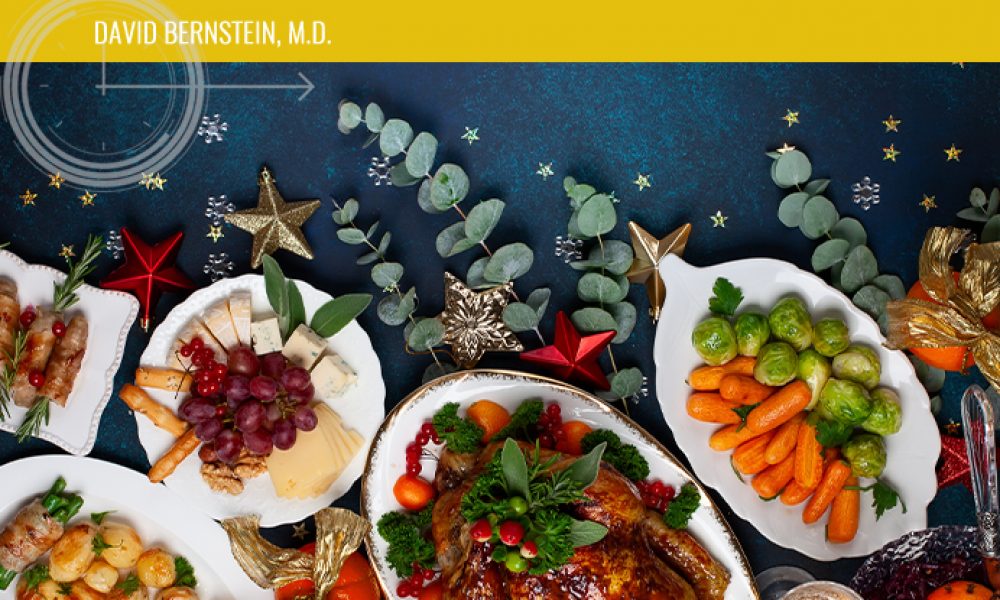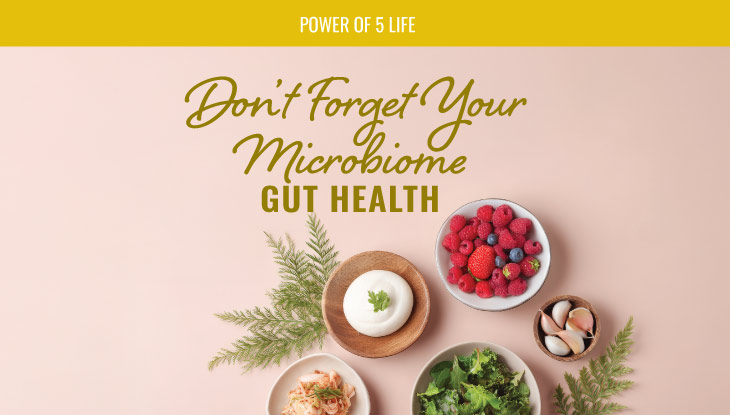Dr. Bernstein loves to kid with me when he says, “I never met a vegetable I didn’t like!” This is true, except for when it comes to okra.
We have been vegetarians for many years, and for the last three years we have been vegans! Lucky for me, fruits, vegetables, nuts, and whole grains are a large part of our diets now.
Even if you are not vegetarian or vegan, sticking to low-carb, low-fat and low-sugar foods is still a good strategy. By making small adjustments to your diet now and through the holiday season, you can keep your diet in good balance. Here are some key pointers to remember.
Satisfy Your Sweet Tooth with Fruit
Eating fresh fruits and vegetables, whole grains, nuts, and lean meats such as chicken and fish will provide a balanced diet and promote health. It is important to limit sugar and carbs as well. While our tendency is often to eat comfort foods during tough times, it is important to remember how this food affects our bodies and overall health.
Incorporate the 5 Essential Nutrients
Make these nutrients a priority in your diet. By doing so, you may help to strengthen your immune system and improve your overall wellness which continues to be important throughout the COVID-19 pandemic.
Here are the nutrients you need:
- Iron, zinc and selenium act as antioxidants for immune cell growth by supporting your skin and mucous membranes. They also reduce free radicals. Iron is found in legumes, whole grains, nuts, chicken, and fish. Zinc is found in dried beans, nuts (especially Brazil nuts), oysters and other seafood, meats, and chicken. Mushrooms are a good source of selenium.
- Vitamin D is necessary for some immune cells, especially those that help destroy infection-causing pathogens. Foods rich in vitamin D include eggs, fish and alternative milks. Milk may also be fortified with vitamin D. Vitamin D may also help to protect against respiratory infections. Enjoy a few moments of sun each day to boost your vitamin D levels.
- Vitamins C and E are found in many tasty foods. Citrus fruits such as oranges, lemons and limes have a lot of vitamin C. Berries, kiwifruit, broccoli, tomatoes, and red peppers also contain a lot of vitamin C. Foods rich in vitamin E include nuts, leafy green vegetables, and vegetable oils.
- B Vitamins such as B-12, B-9 and B-6 are very important for your body’s response to harmful cells and pathogens. B vitamins are abundant in leafy green vegetables, legumes, nuts, eggs, chicken, and fish.
- Vitamin A is very important for the cells in your skin, respiratory tract and gut. This vitamin forms a first-line barrier of defense to fight infection. It also helps to build antibodies that neutralize infection-causing pathogens. You can find vitamin A in tofu, nuts, seeds, whole grains, and legumes. It is also found in oily fish, egg yolks, and cheese. Beta-carotene, which is in yellow and orange vegetables like pumpkin and carrots, can convert to vitamin A in your body. This is an added benefit to your immune system.
Cholesterol-Lowering Foods
The following information was inspired by my reading of the Harvard Medical Newsletter. To lower cholesterol, we should enjoy 20-35 grams of fiber a day, with at least 5-10 grams coming from soluble fiber. Here are eleven great foods to add to your diet to lower cholesterol.
- Oats—Have a bowl of oatmeal or cold oat-based cereal like Cheerios for breakfast.
- Barley and other whole grains—Like oats and oat bran, barley and other whole grains can help lower the risk of heart disease, mainly via the soluble fiber they deliver.
- Beans—Beans are a food rich in soluble fiber. They take time for the body to digest which helps you feel more full. Most beans are great choices for those hoping to lower cholesterol, and they are very versatile.
- Eggplant and okra—I love eggplant! Take a look at my Famous Eggplant Parm in my recipes.
- Nuts—Studies show that eating almonds, walnuts, peanuts, and other nuts benefits the heart. Only two ounces of nuts a day can slightly lower LDL cholesterol.
- Vegetable oils—By using liquid vegetable oils such as canola, sunflower, safflower, and others in place of butter, lard, or shortening when cooking or at the table, you may help lower LDL cholesterol.
- Apples, grapes, strawberries, and citrus fruits—These fruits are rich in pectin. This type of soluble fiber also lowers LDL.
- Foods fortified with sterols and stanols—Sterols and stanols inhibit the body’s ability to absorb cholesterol from food. They are sometimes added to food by manufacturers.
- Soy—By eating soybeans and other soy-rich foods like tofu and soy milk, you can modestly lower your LDL by an estimated 5-6%.
- Fatty fish—By replacing red meat in your diet with fatty fish, you reduce triglycerides in your blood, protect the heart, and lower LDL levels.
Recipes to try!
Quinoa is my favorite grain as it has protein, fiber and essential vitamins. You can add veggies, fruit, or protein to create a complete meal. It is great as a holiday side dish too! Here are my three favorite quinoa recipes.
Quinoa Harvest Salad in a Grilled Portobello Mushroom
A versatile quinoa salad filled with sweet apples, nuts, and dried fruit that can be layered over chicken breast, burgers, or (as I used) a grilled portobello mushroom to keep the recipe vegan/vegetarian-friendly. This recipe has all the essential nutrients to add fiber and protein and lower cholesterol.
Quinoa with Roasted Vegetables
This is an easy and delicious recipe filled with protein, essential vitamins, and 9 amino acids.
Quinoa with Diced Tomatoes and Beans
The combination of quinoa and beans makes this recipe very high in protein. This dish provides complete carbohydrates, is filled with fiber, and is also very low fat!
Keep it Clean
When it comes to your food, the fresher the better! Do your best to let go of processed foods. Read labels to avoid additives, preservatives, added sugar, and unhealthy fats. Stay away from refined carbs—they lack fiber and other valuable nutrients. Avoid snack foods. Drink lots of water!
Limit alcohol too. Moderate intake may prompt heart health, but try not to overdo it. Alcohol is also linked to an increased risk of several diseases and consumption should be limited when sticking to a clean eating diet.
Take Small Steps
Reflect on your diet and determine which food changes you feel comfortable making right now. Start with a goal of one week, and see how you feel after not eating sugar for a week. After two weeks, decide to eliminate something else, like alcohol or red meat, for example. Continue doing this until you have reached the healthy diet appropriate for you and your lifestyle.
Remember also to balance your healthy eating with daily exercise. Make sure you increase your heart rate for at least 140 minutes each week to reduce stress, increase wellness, and sweat. For more information, review Dr. B’s blog on the benefits of SWEAT.
One more thing …
The holidays ahead will be different due to the pandemic. You may not physically be able to see your family this year, or if you are blessed to live nearby, it is still important to keep gatherings small, wear masks, and maintain social distancing to stay safe for ourselves and our loved ones.
We encourage you to be creative this holiday season with family events and meals. Set up Zoom chats or FaceTime meals. You could even set up meal prep and cook with your family and grandkids … It won’t be the same as traditions in the past, but it will be fun and help us feel connected while we are apart.
Wishing you a joyful and beautiful holiday season.
To Healthy Eating and a Healthy and Long Life,
Melissa & Dr. B




